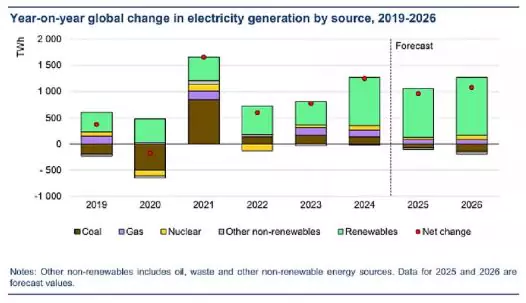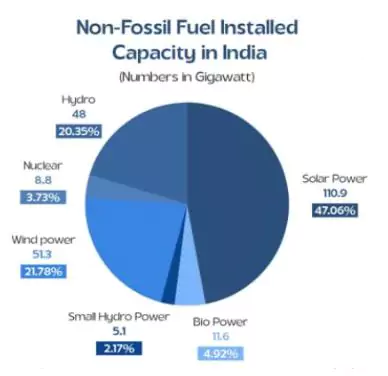According to the Electricity Mid-Year Update 2025 released by the International Energy Agency (IEA), global electricity demand is set to rise much faster during 2025–26 than it did in the past decade.
International Energy Agency (IEA)
- Established: In 1974, following the 1973–74 oil crisis.
- Type: Autonomous intergovernmental organisation within the OECD framework.
- Purpose: Initially created to manage oil supply disruptions; now focuses on broader energy issues.
- Headquarters: Paris, France.
- Membership: 31 member countries (must be OECD members).
- 11 associate countries, including India, which joined as an Associate Member in 2017.
- Functions:
- Monitors and analyses global energy trends.
- Promotes clean energy technologies and innovation.
- Encourages international cooperation on energy transition.
- Major Publications:
- World Energy Outlook
- World Energy Balances
- Energy Technology Perspectives
- Net Zero by 2050
- Electricity Mid-Year Update (2025)
- Coal Mid-Year Update
|
Key Drivers of Electricity Demand Growth
- Rapid Increase in Demand: Demand is forecast to grow by 3.3% in 2025 and 3.7% in 2026, higher than the 2015–2023 average of 2.6%.
- Major Demand Contributors: Growing use of air conditioners, data centre expansion, vehicle electrification, and increased industrial and appliance use.
- New Record Consumption: Global electricity use will exceed 29,000 terawatt-hours (TWh) in 2026.
- Heatwave Impact: Despite economic slowdown, heatwaves in 2025 and 2024 have continued to boost electricity demand.
Regional Trends in Electricity Consumption
- China and India: Set to experience more moderate demand growth in 2025 after strong surges in 2024 due to heatwaves and economic activity.
- United States: Set to witness faster growth in 2025 than 2024, driven by the rise of data centre power consumption.
- European Union: Moderate demand growth continues as the industrial sector has not fully recovered.
Coal and Renewable Generation Trends
- Coal Generation in 2025:
-
- Declined in China and India due to moderate demand and strong renewable growth.
- Increased in US and EU; in the US, due to gas-to-coal switching amid higher gas prices; in the EU, due to low wind and hydropower output.
- Renewables vs Coal: Renewable generation may surpass coal-fired output as early as 2025 or by 2026 at the latest
Shift in Global Energy Mix
- Coal’s Share: Forecast to drop below 33% in global electricity generation—lowest in a century.
- Solar and Wind Growth:
-
- Their combined share is projected to rise from 15% (2024) → 17% (2025) → ~20% (2026).
- This marks a fivefold increase from 4% a decade ago.
- Expected to cover over 90% of the demand increase in 2025.
- Coal-Fired Generation: Expected to decline slightly in 2025, after 1.3% growth in 2024.

Nuclear Energy Expansion
- Record High Forecast: Global nuclear generation is set to hit a new high in 2025, continuing to rise in 2026.
- Key Contributors: Plant restarts in Japan, Strong output from US and France, New reactors in China, India, Korea, and others.
- Growth Rate: Expected to grow at an average of 2% annually over 2025–26.
Carbon Emissions and Climate Impact
- Emissions Plateau: CO₂ emissions from power generation are expected to expected to stop increasing & remain steady in 2025 and decline slightly in 2026
- Role of Renewables: Rapid renewable deployment has helped limit fossil fuel generation increases, but extreme weather events (heat, cold, low rainfall) still influence year-to-year emission variability.
Electricity Security and Infrastructure Challenges
- Grid Investment Essential: The IEA stresses that “strong expansion of renewables and nuclear is steadily reshaping electricity markets but it must be matched by greater investment in grids, storage, and flexibility.”
- Recent Blackouts:
- Chile (Feb, 2025): Grid failure left 99% of 20 million residents without power for 17 hours.
- Spain and Portugal (Apr, 2025): Widespread blackout lasting 10+ hours due to complex failures.
- IEA Recommendations:
-
- Invest in robust grid infrastructure and secure supply chains.
- Enhance grid codes, reserve requirements, and regulatory frameworks.
- Deploy flexibility resources (storage, demand-response, etc.) to ensure power system reliability.
India’s Energy Landscape

- India’s total installed power capacity reached 476 GW as of June 2025, led by 240 GW of thermal, 110.9 GW of solar, and 51.3 GW of wind power,
- Power shortages dropped from 4.2% in 2013–14 to 0.1% in 2024–25.
- Non-fossil fuel sources now contribute 235.7 GW (49%) of total capacity, including 226.9 GW renewable and 8.8 GW nuclear.
- Thermal power remains dominant, accounting for 50.52% of installed capacity.
|
![]() 1 Aug 2025
1 Aug 2025


